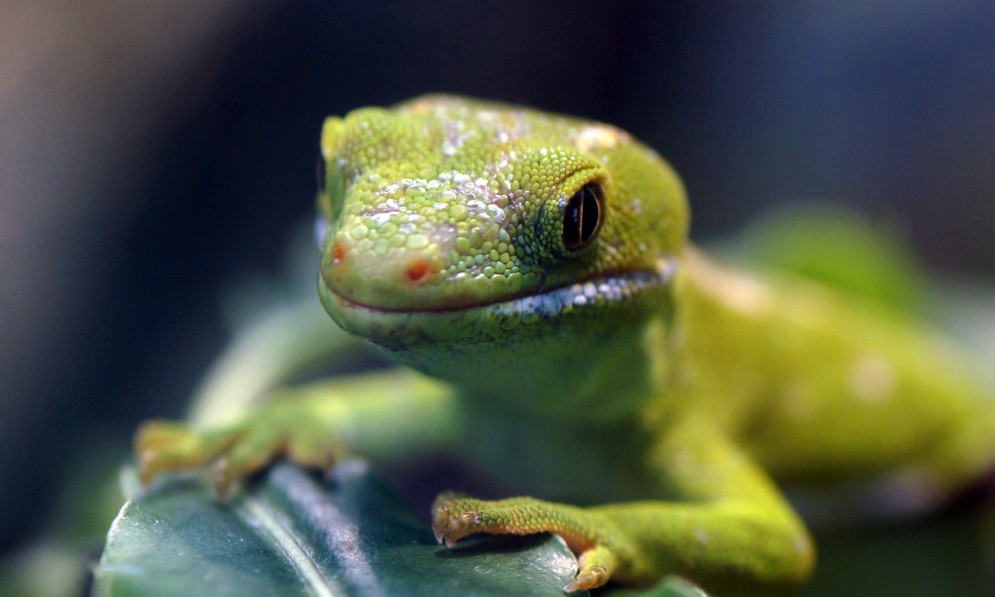You can attract native lizards to your garden by providing lots of places to hide, and plenty of food for geckos and skinks to eat.
Did you know?
New Zealand is home to two types of lizard: geckos and skinks. They're easy to tell apart. Skinks have eyelids and can blink, they have smooth skin and narrow heads. Geckos don't blink - instead, they have a clear membrane over their eyes, which they lick to keep clean. Geckos have a velvety, baggy skin and are great climbers.
New Zealand is home to over 100 different types of lizards, with more being discovered every few years.
Lizards once had lots of places to live but roads, buildings, farms and freshly mown grass have replaced much of their scrubby forest-habitat.
Once you’ve attracted lizards to your garden – chances are you’ll have them forever. Lizards are long-lived and will stay in more or less the same place for years.
Keeping lizards safe
Before you start attracting lizards to your garden, it is important to make sure your backyard is a safe place for them to live and breed.
- Set traps to control introduced predators like rats, stoats, and possums.
- Keep your cat inside, particularly at night. If it shows interest, place netting over your lizard habitat.
- Provide water, particularly in summer.

Otago Skink. Credit: Craig McKenzie
Think like a skink
You can help to give lizards like geckos and skinks a much-needed refuge by creating lots of hiding places. They need to be at least a tail length from a retreat, so it’s important to plant complex cover.
Cryptic shrubs, grasses and plants that give streaky shadows make for good cover. You can create crevices and lizard-sized holes yourself by using rocks and old building materials.
What lizards like
- Thick ground cover.
- Berry or nectar producing plants. Fruit to eat and flowers to attract insects.
- Mulched gardens with good water retention.
- Lots of hiding places in rotten logs, slabs of bark, layered rocks, or holes in a bank.
- Vines and creepers to cover walls, which allows them to move up and down them.
- Stone walls with lots of cracks and crevices. In the winter, skinks in cold climates enter into a semi-hibernation, coming out on sunny days. They will sleep together, so it's important to give them a safe, dry place to sleep and build your rock wall facing the sun.
- Stacks - build an Onduline stack. These are pancake piles made by stacking pieces of corrugated roofing material. Each sheet is separated by small pebbles. Terracotta roofing tiles work as well.
- Water. Place water bowls in the garden – skinks may use them every day in summer.
Remember - it’s illegal to collect skinks or geckos and it is recommended you don’t handle them. If you provide a welcome environment, be patient and just let them find you.
Top plants for lizards
Plants that flower close to the ground bring insects and flies within reach. As well as eating invertebrates and nectar, lizards supplement their diet with berries. Native fruits small enough to be a mouthful come from Coprosma, Muehlenbeckia, Melicytus or Gaultheria
- Porcupine scrub (Melicytus alpinus)
- Mikimiki or Mingimingi (Coprosma propinqua)
- Thick leaved coprosma (Coprosma crassifolia)
- Shrubby tororaro (Muehlenbeckia astonii)
- Pohuehue (scrambling Muehlenbeckia species)
- Matagouri (Discaria toumatou)
- Manuka (Leptospermum scoparium)
- Kanuka (Kunzea ericoides)
- Gaultheria, Pentachondra, Pernettya, and Leucopogon
- Raoulia and other cushion plants
- Helichrysum, Parahebe, Pimelia
- Tussock, Astelia and flax. These have bundles of dead material at their base with insects, their streaky shadows are good camouflage.
- Pohuehue. It is a great moth attractant

